<< Previous | Displaying results 5451-5500 of 6769 for "" | Next >>
Insignia of the 26th Infantry Division. The 26th Infantry Division, the "Yankee" division, was so nicknamed to recognize the six New England states from whose National Guard units the division was raised during World War I.
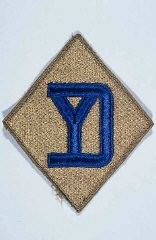
After liberation by US troops, former prisoners wait in line for soup at the Gusen camp, a subcamp of Mauthausen concentration camp. Gusen, Austria, May 12, 1945.
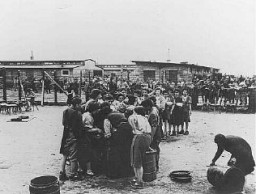
Two political prisoners, after US soldiers liberated the Gusen concentration camp. Austria, May 12, 1945.
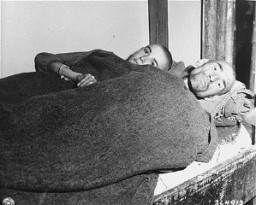
The crematoria at the Gusen camp, a subcamp of Mauthausen concentration camp, still held human remains after liberation. Austria, May 5, 1945.
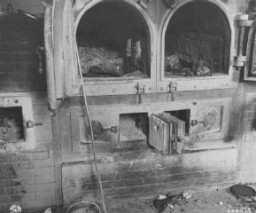
Insignia of the 83rd Infantry Division. The 83rd Infantry Division received its nickname, the "Thunderbolt" division, after a division-wide contest for a new nickname held in early 1945. The earlier nickname, "Ohio," was based on the division's insignia (which includes the name "Ohio," where the division was raised during World War I). A new nickname was desired to represent the nationwide origins of the division's personnel during World War II.
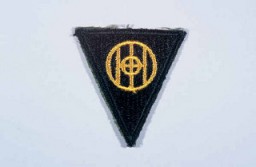
Survivors in Langenstein after the camp was liberated by the 83rd Infantry Division. Langenstein, Germany, April 17, 1945.
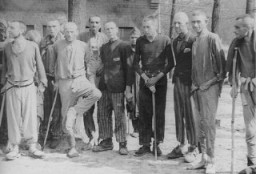
Insignia of the 9th Armored Division. Although no nickname for the 9th was in common usage throughout World War II, "Phantom" division was sometimes used in 1945. It originated during the Battle of the Bulge, when the 9th Armored Division seemed, like a phantom, to be everywhere along the front.
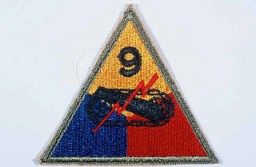
The commanding general of the 9th Armored Division (third from right), and members of the division who won the Distinguished Service Cross pose with the sign placed on the Ludendorff Bridge after its capture. US Army Signal Corps photograph taken by W. Spangle on September 18, 1945, several months after the bridge was captured.
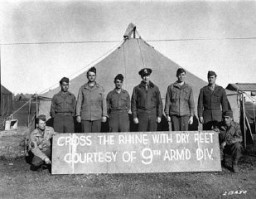
The sign erected by the 9th Armored division on the Ludendorff bridge after its capture. March 11, 1945. US Army Signal Corps photograph taken by W. Spangle.
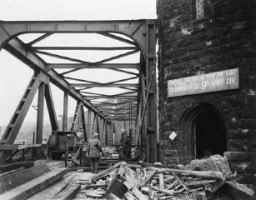
Members of the US 9th Armored Division meet up with Soviet units near Linz, Austria. This photograph was taken by US Army Signal Corps photographer Arnold E. Samuelson. Austria, May 2, 1945.

Members of the US 9th Armored Division meet up with Soviet units near Linz, Austria. This photograph was taken by US Army Signal Corps photographer Arnold E. Samuelson. Austria, May 2, 1945.
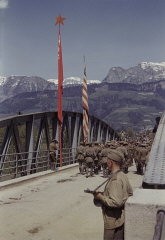
Insignia of the 10th Armored Division. The "Tiger Division" nickname of the 10th originates from a division-wide contest held while it was training in the United States, symbolizing the division "clawing and mauling" its way through the enemy.
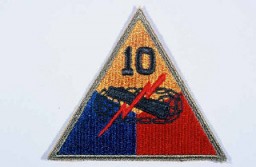
Insignia of the 95th Infantry Division. The 95th Infantry Division, the "Victory" division, gained its nickname from the divisional insignia approved in 1942: the arabic numeral "9" combined with the roman numeral "V" to represent "95." The "V" led to the nickname, since the letter "V" was universally recognized as an Allied symbol for resistance and victory over the Axis during World War II.
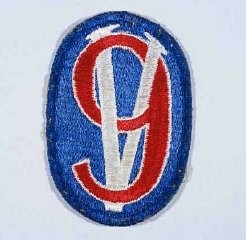
Insignia of the 8th Armored Division. The nickname of the 8th Armored Division, the "Thundering Herd," was coined before the division went to Europe in late 1944. It was also known as the "Iron Snake" late in the war, after a correspondent for Newsweek likened the 8th to a "great ironclad snake" as it crossed the Rhine River in late March 1945.
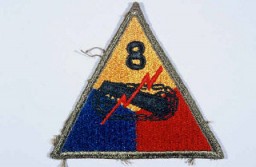
US soldiers of the 8th Infantry Regiment seek cover behind hedges and signs to return fire to German forces holding the town of Libin. Belgium, September 7, 1944.
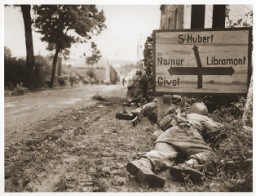
Insignia of the 8th Infantry Division. The 8th Infantry Division was known as both the "Golden Arrow" and "Pathfinder" division during World War II. Both nicknames originated from the division's insignia, which includes a gold arrow to represent the nineteenth century explorer of California, John Fremont. The division was formed in California in 1918.

The main gate of the Wöbbelin concentration camp. On May 2, 1945, the 8th Infantry Division and the 82nd Airborne Division encountered the Wöbbelin concentration camp. Photograph taken upon the liberation of the camp by US forces. Germany, May 4, 1945.
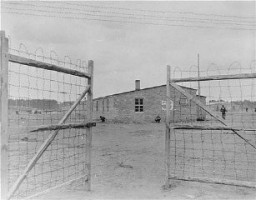
A survivor in Wöbbelin. The soldier in the foreground of the photograph wears the insignia of the 8th Infantry Division. Along with the 82nd Airborne Division, on May 2, 1945, the 8th Infantry Division encountered the Wöbbelin camp. Germany, May 4-5, 1945.
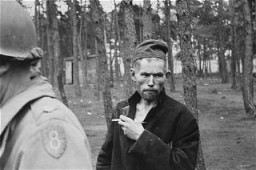
On May 2, 1945, the 8th Infantry Division and the 82nd Airborne Division encountered the Wöbbelin concentration camp. Here, American soldiers patrol the perimeter of the camp. Germany, May 4-May 10, 1945.
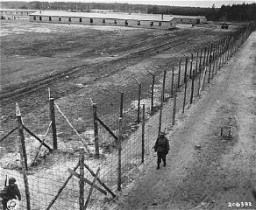
On May 2, 1945, the 8th Infantry Division and the 82nd Airborne Division encountered the Wöbbelin concentration camp. This photograph shows US troops in the Wöbbelin camp. Germany, May 4–6, 1945.
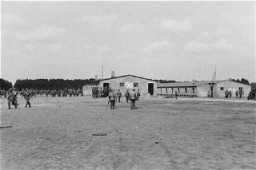
After the liberation of the Wöbbelin camp, US troops forced the townspeople of Ludwigslust to bury the bodies of prisoners killed in the camp. Germany, May 7, 1945.
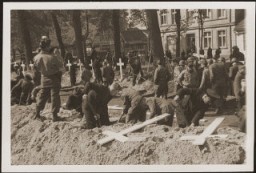
After the liberation of the Wöbbelin camp, US troops forced the townspeople of Ludwigslust to bury the bodies of prisoners killed in the camp. This photograph shows German civilians who were ordered to bury the dead; US troops stand in the background. Germany, May 7, 1945
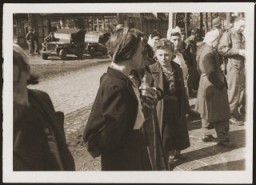
After the liberation of the Wöbbelin camp, US troops forced the townspeople of Ludwigslust to bury the bodies of prisoners killed in the camp and give the victims a proper burial. This photograph shows the funeral for the victims. Germany, May 7, 1945.
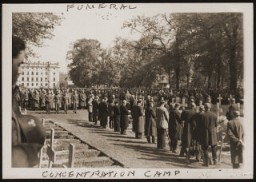
Insignia of the 20th Armored Division. Although no nickname is commonly associated with the 20th, "Armoraiders" may have been occasionally in use during World War II.
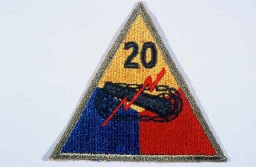
Insignia of the 101st Airborne Division. The nickname of the 101st Airborne Division, "Screaming Eagles," originates from the division's insignia, a bald eagle on a black shield. "Old Abe" was the eagle mascot of a Wisconsin regiment during the Civil War. The 101st was formed as a reserve unit in Wisconsin shortly after World War I and included "Old Abe" as part of the division's insignia.
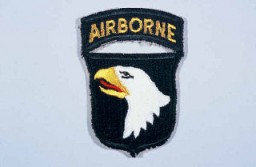
Insignia of the 99th Infantry Division. The 99th Infantry Division, the "Checkerboard" division, gained its nickname from the division's insignia. The insignia was devised upon the 99th's formation in 1942, when the division was headquartered in the city of Pittsburgh. The blue and white checkerboard in the division's insignia is taken from the coat of arms of William Pitt, for whom Pittsburgh is named. The division was also known as the "Battle Babies" during 1945, a sobriquet coined by a United Press…
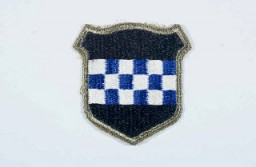
Insignia of the 103rd Infantry Division. The 103rd Infantry Division, the "Cactus" division, is so called after the 103rd's shoulder patch, a cactus in a gold circle. The cactus is representative of the states whose troops formed the unit in the early 1920s: Arizona, Colorado, and New Mexico.

Insignia of the 104th Infantry Division. The nickname of the 104th Infantry Division, "Timberwolf," originated from the division's insignia, a gray timberwolf. The timberwolf, native to the Pacific Northwest, was chosen as representative of the area where the division was formed in 1942.
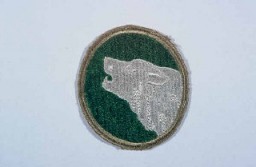
Insignia of the 63rd Infantry Division. The 63rd Infantry Division was nicknamed the "Blood and Fire" division soon after its formation in the spring of 1943. The nickname commemorates British prime minister Winston Churchill's statement at the Casablanca Conference in January 1943 that "the enemy would bleed and burn in expiation of their crimes against humanity." The divisional insignia illustrates the nickname.
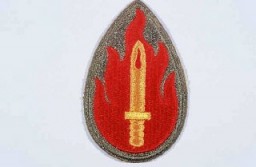
US troops with the 102nd Infantry Division at a barn outside Gardelegen, where over 1,000 prisoners were burned alive by the SS. Germany, April 14, 1945.
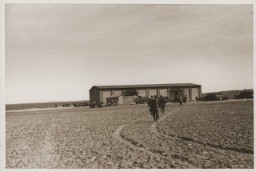
American troops inspect the site of the Gardelegen atrocity. In the background, German civilians exhume corpses who were buried in a mass grave by the SS. Germany, April 18, 1945.
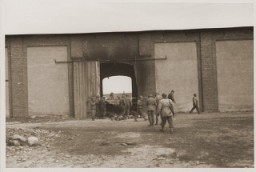
An American tank follows German civilians from Gardelegen who are marching to a barn just outside the town, where they will dig graves for over 1,000 prisoners killed by the SS inside the barn. April 18, 1945.

An American medic and soldier stand by the corpse of a prisoner shot on the road near Gardelegen. The prisoner was shot by the SS when he was too exhausted to continue on a death march. Germany, April 14-18, 1945.
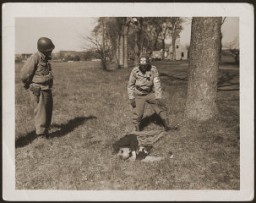
Insignia of the 3rd Armored Division. "Spearhead" was adopted as the nickname of the 3rd Armored Division in recognition of the division's role as the "spearhead" of many attacks during the liberation of France in 1944.

Insignia of the 82nd Airborne Division. The nickname for the 82nd Airborne Division originated in World War I, signifying the "All American" composition of its members. The troops who formed the division came from diverse areas of the United States.
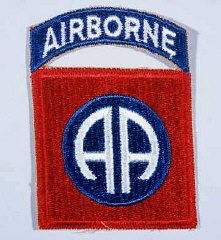
A chaplain with the 82nd Airborne Division helps a survivor board a truck that will evacuate him from the Wöbbelin concentration camp to an American field hospital. Germany, May 4, 1945.
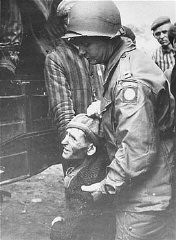
The fenced perimeter and an entrance to the women's camp at Wöbbelin. Photograph taken May 4–6, 1945.
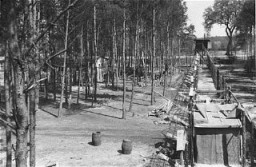
US troops with the 82nd Airborne Division look on as Germans are forced to exhume corpses from a mass grave. Wöbbelin, Germany, May 6, 1945.
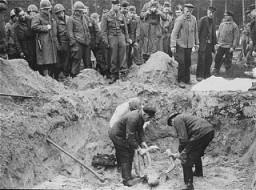
After the liberation of the Wöbbelin camp, US troops forced the townspeople of Ludwigslust to bury the bodies of prisoners killed in the camp. This photograph shows American troops at the funeral service for the victims. Germany, May 7, 1945.
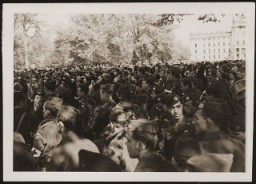
Survivors waiting for to be evacuated from the Wöbbelin concentration camp to receive medical attention at a field hospital. Germany, May 4, 1945.
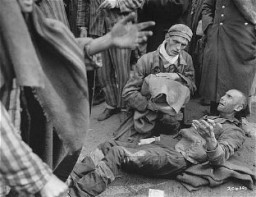
Survivors in Wöbbelin board trucks for evacuation from the camp to an American field hospital for medical attention. Germany, May 4–5, 1945.
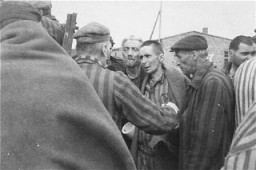
A US Army soldier views the bodies of prisoners piled on top of one another in the doorway of a barracks in Wöbbelin. Germany, May 4–5, 1945.
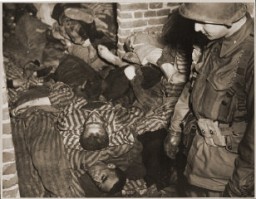
The crematorium building at the Flossenbürg concentration camp. Flossenbürg, Germany, May 1945.
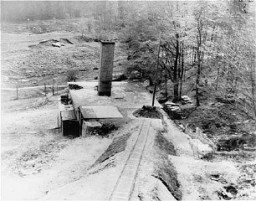
A counterfeit British bank note produced by Jewish forced laborers employed in Operation Bernhard at the Sachsenhausen concentration camp. Under an order issued by SS chief Heinrich Himmler in 1942, Operation Bernhard initially aimed to produce large quantities of counterfeit British bank notes. The goal was to flood the British currency market and trigger a financial crisis.
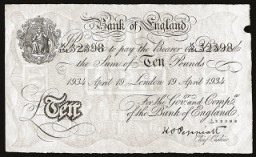
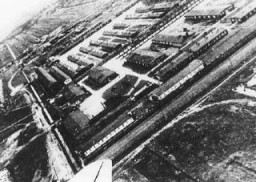
An SS guard watches prisoner laborers at construction work. Neuengamme concentration camp, Germany, wartime.
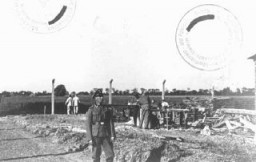
Concentration camp prisoners, many from satellite camps of Neuengamme, remove corpses of German civilians after Allied bombings of Hamburg. Germany, August 1943.
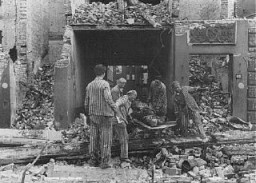
SS men supervise laborers at construction work. Neuengamme concentration camp, Germany, winter 1943.
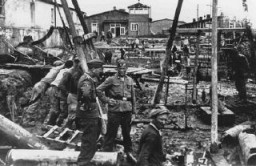
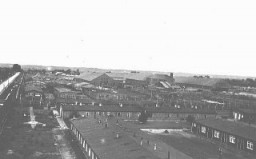
A Jewish child is forced to show the scar left after SS physicians removed his lymph nodes. This child was one of 20 Jewish children injected with tuberculosis germs as part of a medical experiment. All were murdered on April 20, 1945. Neuengamme concentration camp, Germany, between December 1944 and February 1945.
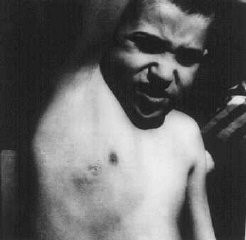
We would like to thank Crown Family Philanthropies, Abe and Ida Cooper Foundation, the Claims Conference, EVZ, and BMF for supporting the ongoing work to create content and resources for the Holocaust Encyclopedia. View the list of donor acknowledgement.